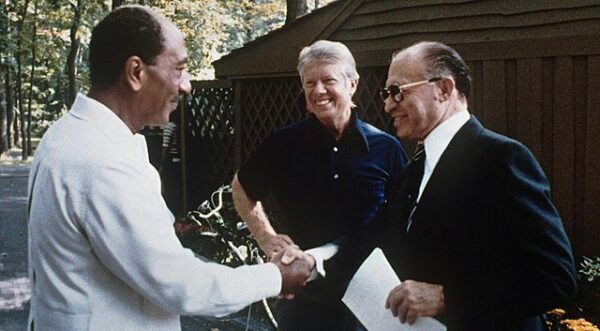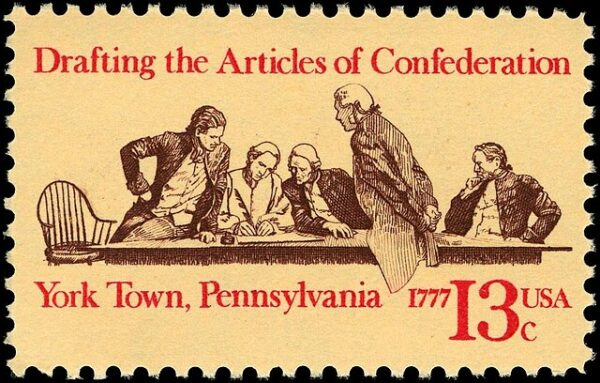The Camp David Accords, signed on September 17, 1978, represent a historic moment in the quest for peace in the Middle East. The negotiations, held at the presidential retreat of Camp David in Maryland, were brokered by then-U.S. President Jimmy Carter and brought together Egyptian President Anwar Sadat and Israeli Prime Minister Menachem Begin. These accords marked a significant step towards resolving one of the world’s most enduring and complex conflicts.
At the heart of the Camp David Accords was the commitment to achieving peace between Egypt and Israel. The State Department writes, “Signed by President Jimmy Carter, Egyptian President Anwar Sadat, and Israeli Prime Minister Menachem Begin in September 1978, established a framework for a historic peace treaty concluded between Israel and Egypt in March 1979. President Carter and the U.S. Government played leading roles in creating the opportunity for this agreement to occur. From the start of his administration, Carter and his Secretary of State, Cyrus Vance, pursued intensive negotiations with Arab and Israeli leaders, hoping to reconvene the Geneva Conference, which had been established in December 1973 to seek an end to the Arab-Israeli dispute.”
Intense and often contentious discussions characterized the negotiations. President Carter played a crucial role as a mediator, shuttling between the two leaders and helping bridge the deep divides between their positions. After days of challenging negotiations, the parties reached a historic agreement that consisted of two key documents: the Framework for Peace in the Middle East and the Egypt-Israel Peace Treaty.
“Rarely had a U.S. President devoted as much sustained attention to a single foreign policy issue as Carter did over the summit’s two-week duration, The State Department explains. “Carter’s ambitious goals for the talks included breaking the negotiating deadlock and hammering out a detailed Egyptian-Israeli peace agreement. To this end, U.S. Middle East experts produced a draft treaty text, which served as the basis for the negotiations and would be revised numerous times during the Summit. The talks proved extremely challenging, especially when the trilateral format became impossible to sustain. Instead, Carter and Vance met with the Egyptian and Israeli delegations individually over the course of the next twelve days.
The talks ranged over a number of issues, including the future of Israeli settlements and airbases in the Sinai Peninsula, but it was Gaza and the West Bank that continued to pose the most difficulty. Specifically, the delegations were divided over the applicability of United Nations Security Council Resolution 242 to a long-term agreement in the territories, as well as the status of Israel’s settlements during projected negotiations on Palestinian autonomy that would follow a peace treaty. In the end, while the Summit did not produce a formal peace agreement, it successfully produced the basis for an Egyptian-Israeli peace, in the form of two “Framework” documents, which laid out the principles of a bilateral peace agreement as well as a formula for Palestinian self-government in Gaza and the West Bank.”
The Framework for Peace outlined a step-by-step approach to resolving the Israeli-Egyptian conflict, addressing issues such as the future of the Sinai Peninsula, Palestinian autonomy, and establishing diplomatic relations between Egypt and Israel. The Egypt-Israel Peace Treaty, signed separately in 1979, officially ended the state of war between the two nations and paved the way for the normalization of diplomatic, economic, and cultural relations.
While the Camp David Accords did not lead to a comprehensive Middle East peace, they did set a precedent for Arab-Israeli negotiations, demonstrating that diplomacy and dialogue could lead to tangible results. Anwar Sadat’s and Menachem Begin’s willingness to make difficult compromises for the sake of peace marked a turning point in the region’s history, and the accords remain a symbol of hope and the potential for reconciliation in one of the world’s most intractable conflicts.






